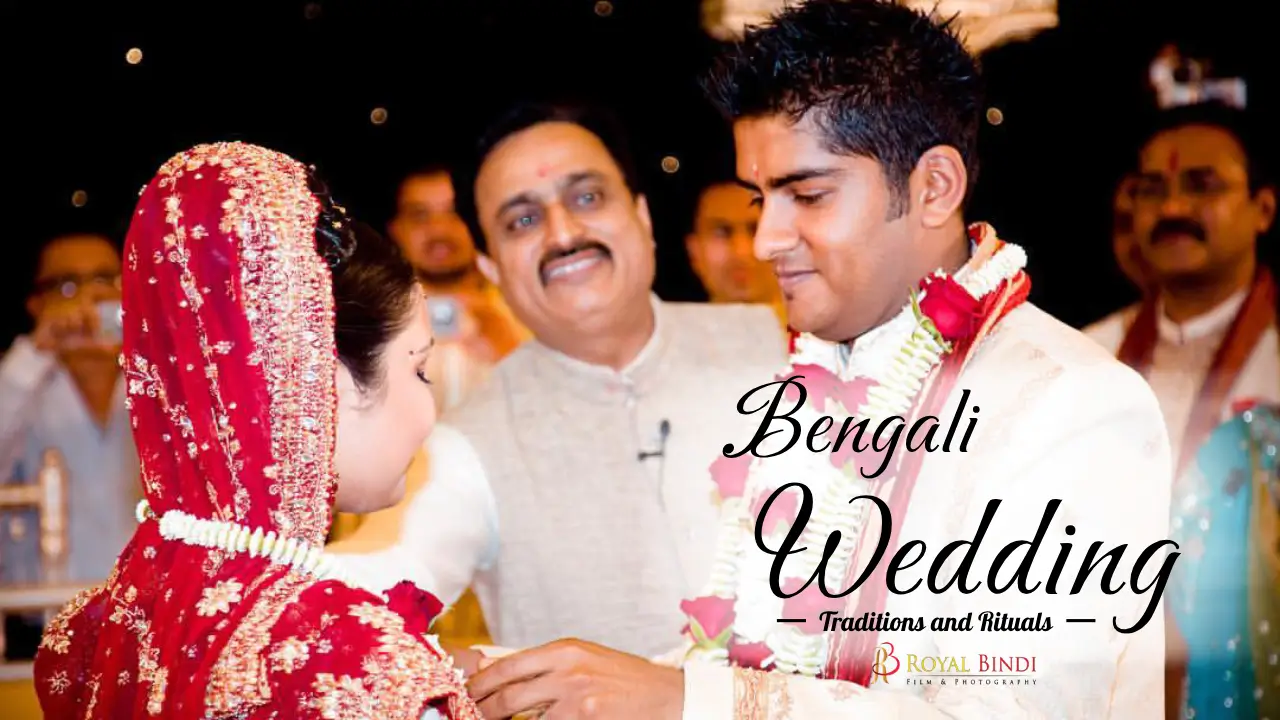Bengali weddings are a vibrant tapestry woven with rich traditions, heartfelt rituals, and joyous celebrations. Every step, from the initial blessings to the final vows, holds a special significance, making Bengali matrimonial customs a truly captivating experience.
We’re the trusted Asian wedding photography team in the UK. In this blog, we’ll delve into the explanation of various Bengali wedding traditions and rituals that create this unforgettable event to be remembered throughout your life.
The Enchanting Journey of Bengali Wedding Rituals
A Bengali wedding unfolds over several days, with each ritual marking a significant step towards the couple’s union. Here’s a glimpse into some of the most prominent Bengali wedding traditions and rituals:
Bengali Wedding Pre-Wedding Rituals
In Bengali weddings, pre-wedding rituals may range from very traditional to remarkably unusual. So let’s examine each of their names and meanings in more detail:
Pati Potro
In Bengali wedding traditions, families gather around a special mat (shital pati) to set the wedding date. It is a warm gathering, often over tea! To welcome the bride, the groom’s family then arrives with gifts like fish (abundance), sweets, and betel leaves (symbols of good luck).
Fun fact:
Family elders would write wedding details and dowry agreements on leaves using sindoor and haldi, acting as a traditional contract.
Aashirbaad
With the wedding date set, it’s time for blessings! In Bengali weddings, instead of rings, families visit each other’s homes for a ceremony called Aashirbaad. Think of it as a special meet-the-in-laws where everyone showers the happy couple with gifts like gold jewellery, new clothes, and sweet treats. Fish, yoghurt, betel nuts, and leaves are also exchanged – all symbols of good luck for the future bride and groom.
Did you know?
Traditionally, the groom’s family went first, seen as an honour for accepting the bride!
Aiburobhaat
In Bengali weddings, there’s a bittersweet tradition before the big day. The bride and groom have one last hurrah as single folk with a special meal at home! Their mums typically whip up a feast of delicious Bengali dishes, all their favourites, of course. We’re talking fluffy rice, fragrant curries, and melt-in-your-mouth desserts – a true celebration before things get hitched!
Shankha Pola
Bengali weddings are full of heart-warming traditions. One such custom involves the bride’s family gathering around her for a special ceremony. Here, the bride receives a set of beautiful red and white conch shell bangles, a symbol of good luck and prosperity for her married life. It’s a lovely moment of togetherness and blessings as she prepares for her big day!
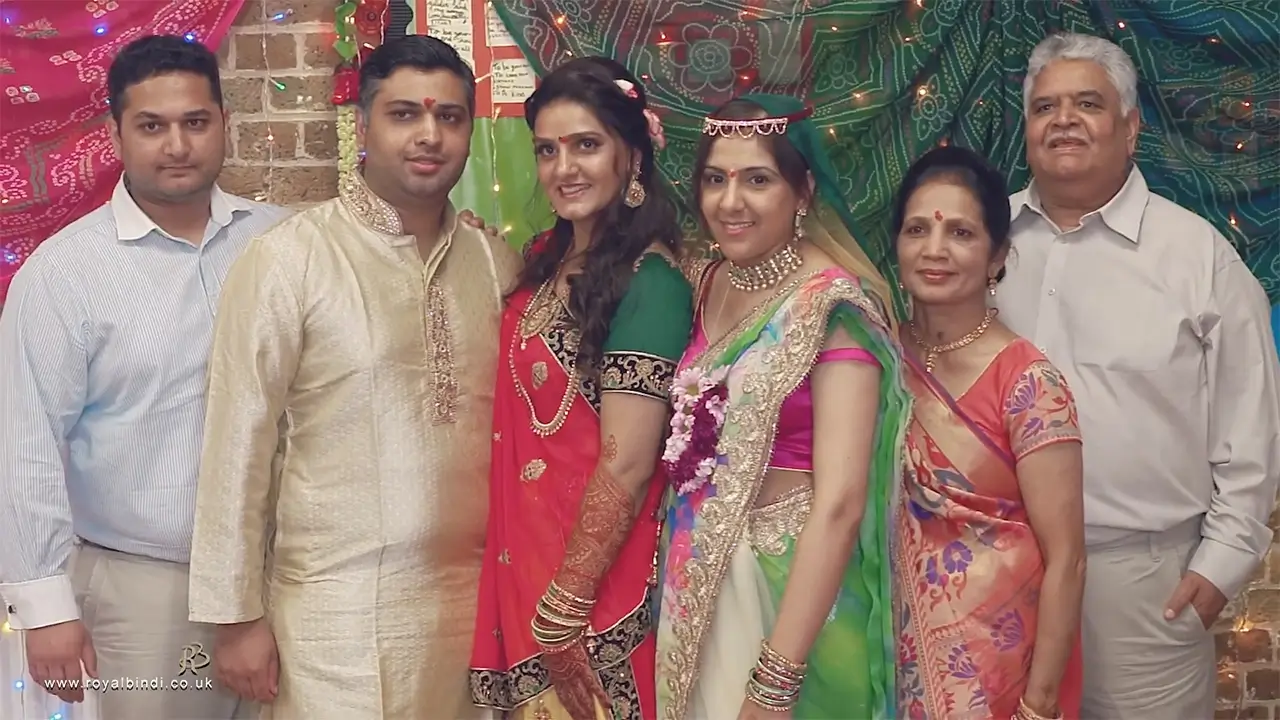
Ganga Nimontron
Bengali weddings are steeped in beautiful traditions, and one of the unique ones is the Ganga Nimontron. In India, rivers are seen as almost divine, so Bengalis invite the holy Ganges River itself to bless the wedding! Imagine a small procession of women from the family heading towards the river. They carry flowers and offerings, ready to pay their respects and invite the Ganges to witness this joyous occasion.
Dadhi Mongal
Bengali weddings have a unique tradition before the ceremony! On the wedding day, the bride, and groom are served a special breakfast of soaked, flattened rice and yoghurt. This sweet and light meal symbolises a fresh start for their new life together.
But here’s the twist – it’s their last meal of the day! They’ll be observing a short fast until they tie the knot. It’s a way to cleanse the body and mind before embarking on their journey as husband and wife, making the post-wedding feast all the more special.
Nandi Mukh
Bengali weddings are all about family, even those who have passed on. In a beautiful tradition, the newlyweds pay their respects to their ancestors before embarking on their new life together. Imagine the couple standing before a priest who chants calming mantras and performs a puja (a prayer ceremony).
It’s a touching moment where they seek the blessings of their loved ones who are no longer with them, ensuring their presence on this special day.
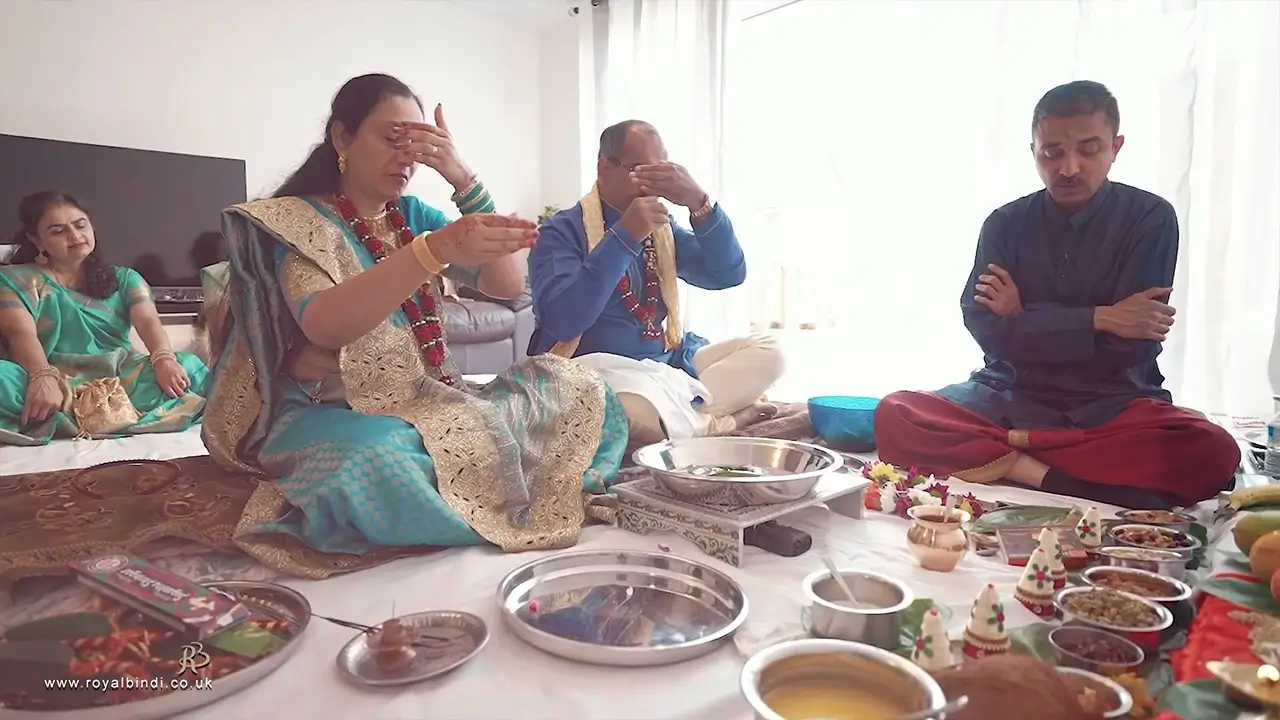
Gae Holud
Bengali weddings are a riot of colour, and the Gae Holud ceremony is no exception! Think of it as a vibrant pre-wedding party. The groom gets the first splash of colour with a turmeric paste from his family. Then, holy water from a river is used for a cleansing bath.
But the fun does not stop there! The bride gets her turn back home, where her family showers her with the same golden turmeric paste. It is a joyous occasion filled with laughter, good wishes, and a beautiful glow for the bride and groom before the big day.
Did you know?
During this ceremony, women have to keep their mouths filled with betel leaf and nuts – and stay completely silent to make the ceremony pure and no spit enter it.
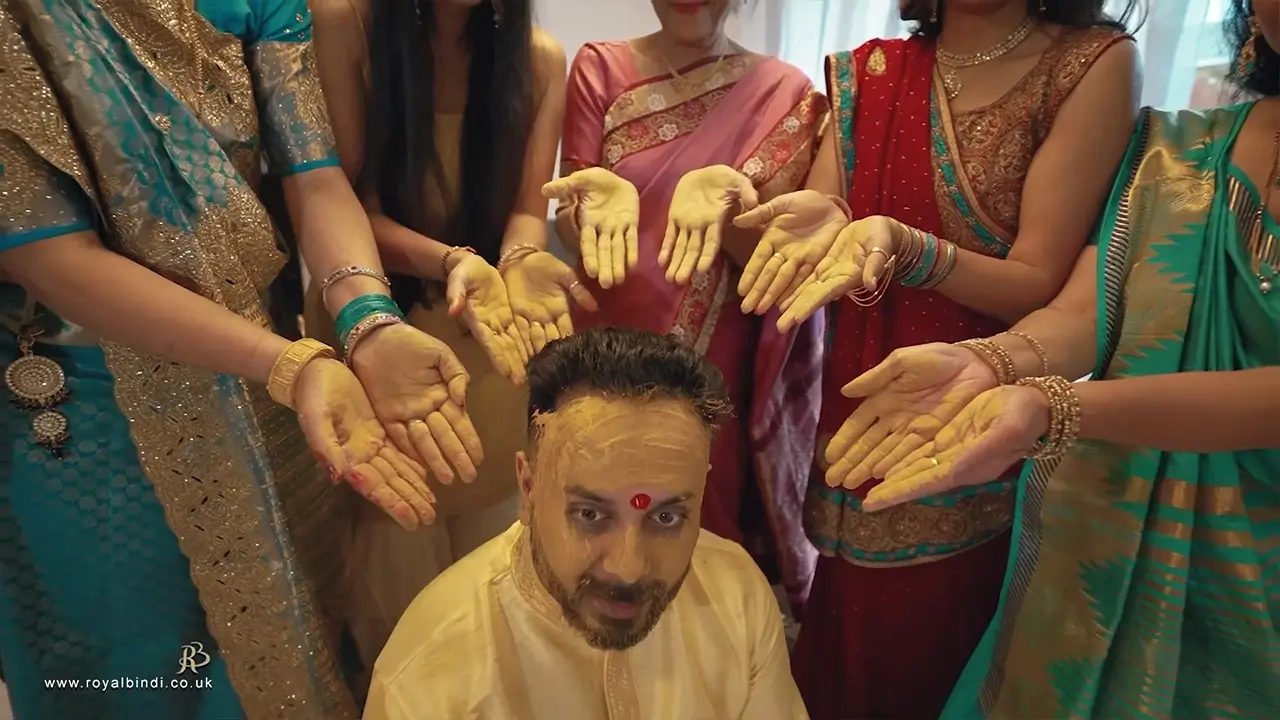
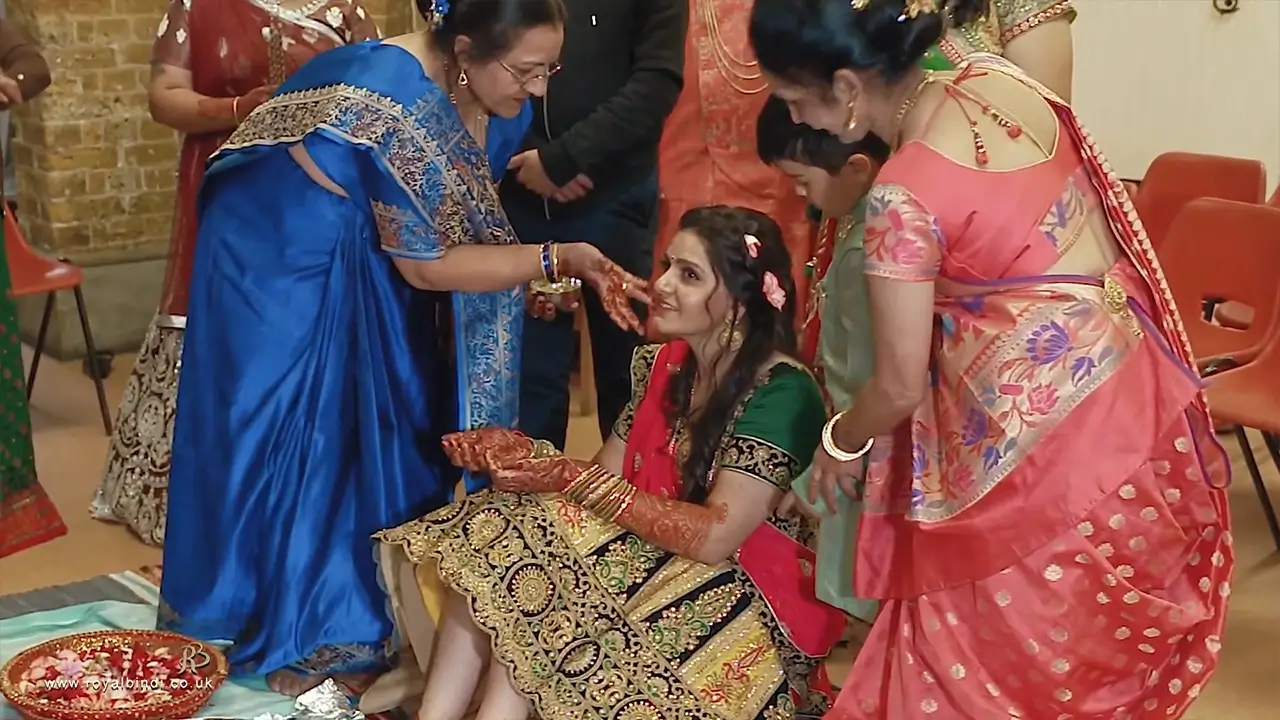
Bengali Wedding Day Rituals
After knowing the pre-wedding rituals now, let’s explore the main traditions and rituals that are carried out during Bengali weddings:
Dorpon to Bor Jatri
In Bengali weddings, the groom gets a special send-off before heading to the wedding venue (mandap). His mum presents him with a charm called a “Dorpon,” believed to ward off evil spirits and bring him good luck on his big day.
It is a touching gesture of love and protection. Then, she curtains a sacred Tulsi mala (basil garland) and crimson threads around his neck, showering him with blessings for his new adventure as a husband. With emotions running high, everyone except the groom’s mum joins the wedding procession (Bor Jatri or Baraat) and heads off to the mandap, ready to celebrate!
Did you know?
The mother used to sob bitterly while sending her son go, believing that the new wife would not take good care of him from this point on.
Bor Boron
The groom’s arrival is the most joyous occasion and is called “Boron,” which simply means “welcome” The bride’s family pulls out all the stops! The air fills with the sound of conch shells and happy chants (Ulluduhwani) as everyone welcomes the groom.
But the sweetest welcome comes from the bride’s mum, who showers him with blessings, water, and of course, delicious treats. The bride’s father then steps in, presenting the groom with brand-new clothes (Bostro) and a special gold ring (Angti) to wear during the ceremony. It’s a warm exchange that sets the tone for a beautiful celebration.
Did you know?
The bride’s father used to have to touch and wash the groom’s feet at Bostro daan. These days, it’s only a formality to touch the groom’s knee with a finger!
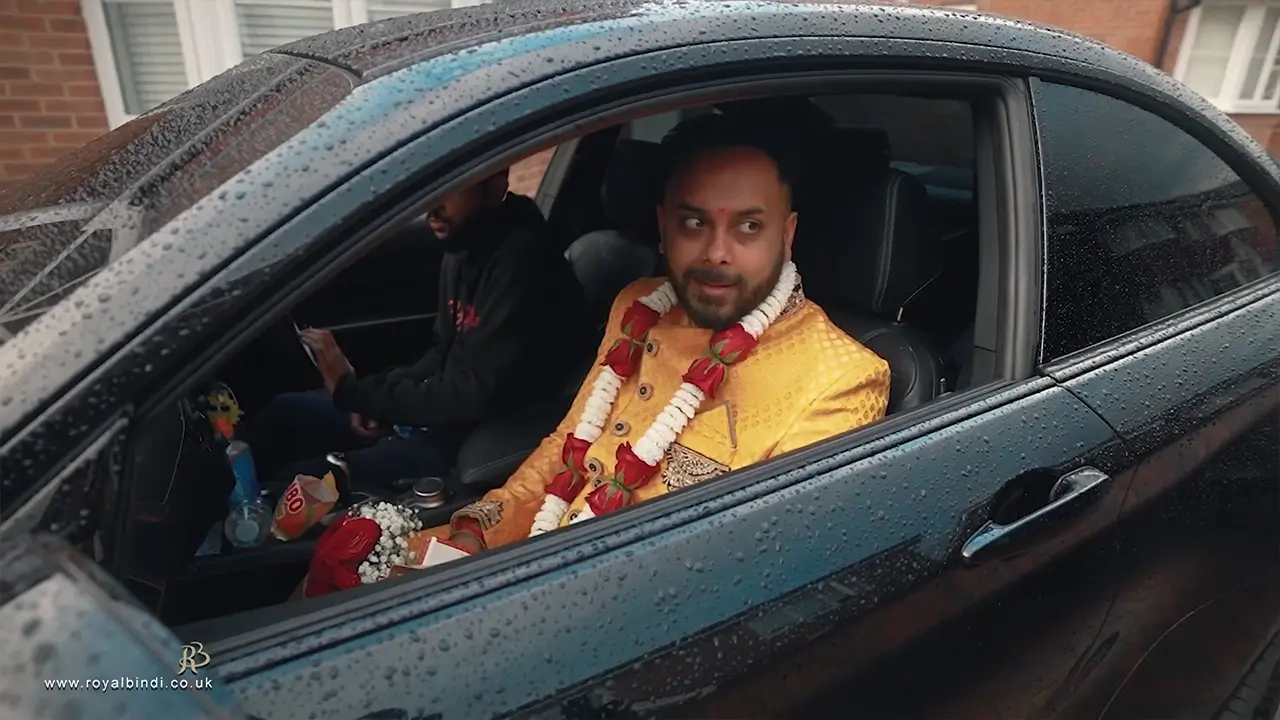
Saat Paak
After welcoming the Groom inside the wedding venue, the Bride is carried to the mandap (ceremony area) on a beautiful wooden seat by her brothers or close relatives. It’s a moment filled with pride and joy for the family.
But the tradition doesn’t stop there! To symbolise their journey together, the bride is then gently walked around the groom seven times, sealing their bond with each step.
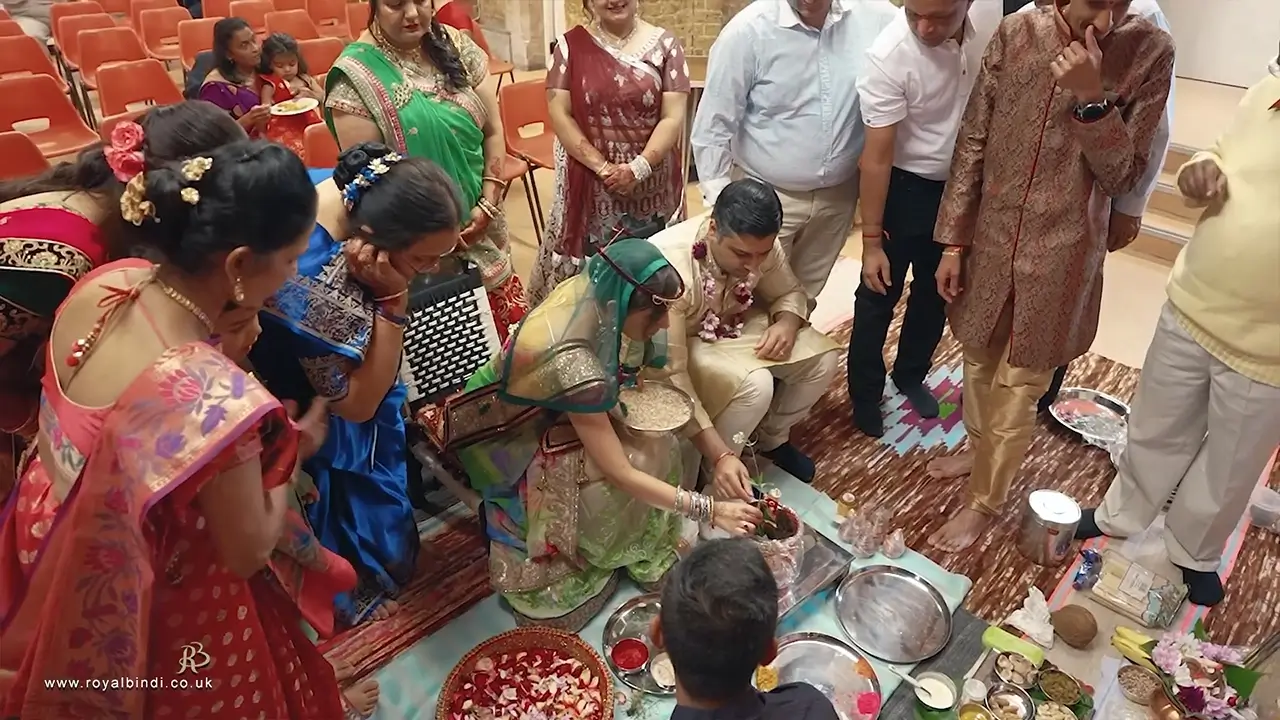
Subho Drishti
After walking around the groom seven times, the bride peeks at him through betel leaves in a shy “Subho Dhristi” ritual. This first glance is a heart-warming moment, met with cheers and joyful noise.
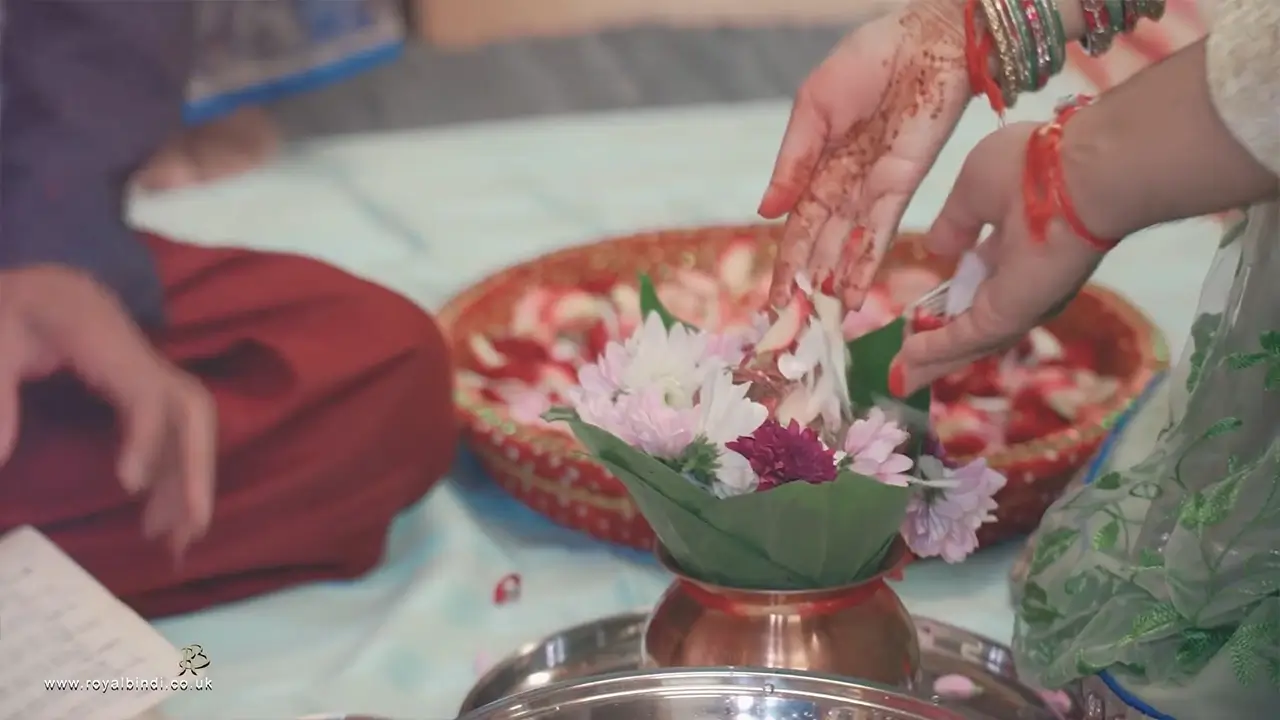
Mala Bodol
After the sweet “Subho Dhristi” moment, things get fun. The bride and groom exchange flower garlands, but it is not that simple. The bride’s brother tries his best to lift her up, making it a hilarious challenge for the groom to reach her!
This light-hearted competition always ends in laughter and joy as the couple finally succeeds in exchanging garlands, sealing their bond with a touch of playful competition.
Sampradaan / Kanyadan
Sampradaan marks a turning point. The bride’s father, or another respected male relative, symbolically hands her over to the groom. Imagine the emotion as they join hands, bound together by a sacred thread chanted upon by the priest. It’s a solemn moment that signifies the beginning of their new life as husband and wife.
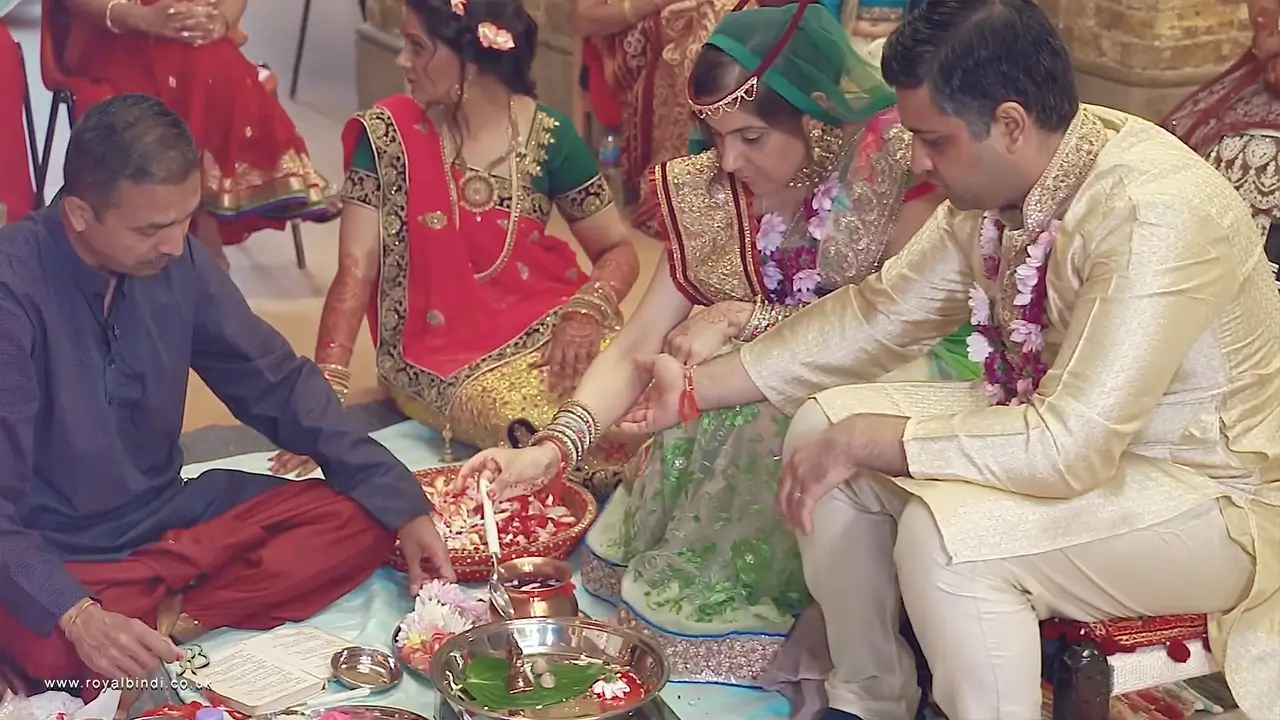
Yagna
In this ceremony, the bride and groom sit side-by-side near a sacred fire. The priest chants calming mantras, and the couple offers prayers to Agni (The God of Fire), It’s a symbolic act of seeking blessings for a pure and enduring union.
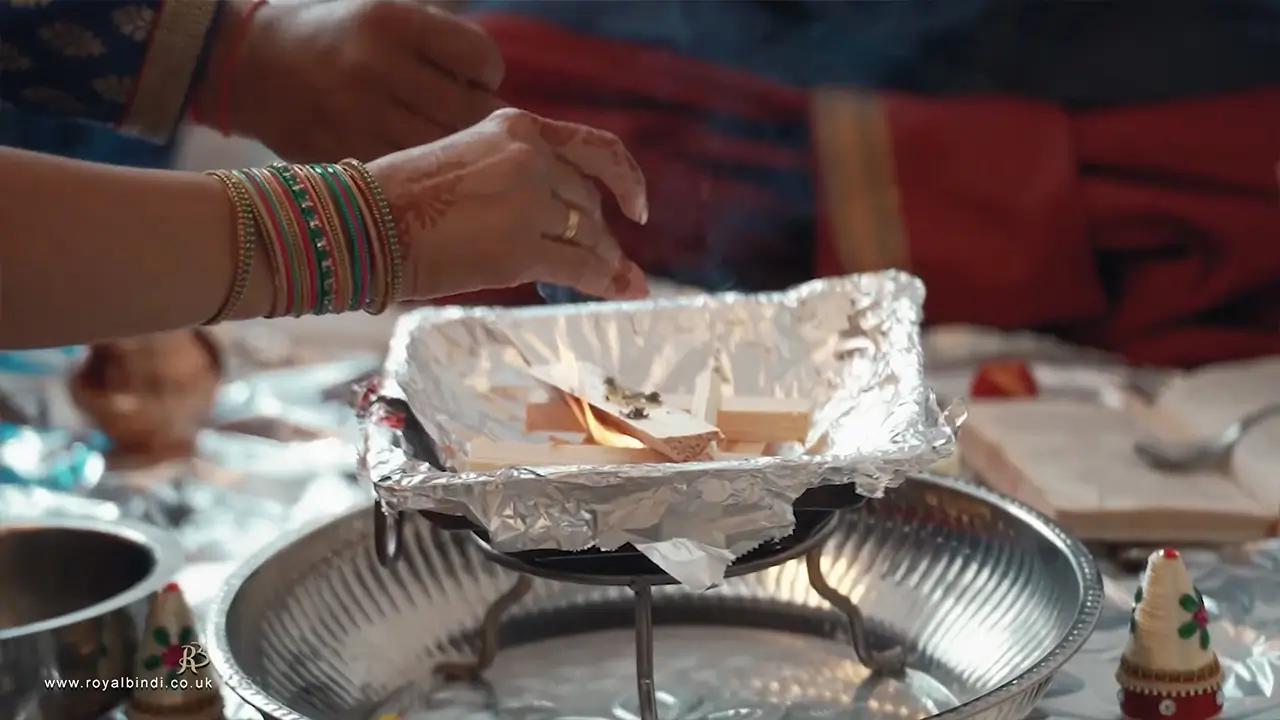
Saptapadi
The Bengali wedding ceremony reaches its peak with the “Saptapadi” ritual, also known as “Saat Paak.” Here’s the beautiful part: the bride’s sari pallu (the loose end) is tied to the groom’s uttariya (scarf). Together, they walk around the holy fire seven times.
Each step signifies a vow they make to each other, promises for a lifetime of love and support. It’s a solemn moment filled with deep emotion as they embark on their journey as husband and wife.
Anjali
The bride’s brother presents her with a dish of puffed rice, a symbol of prosperity. Together, the bride and groom join hands and offer the puffed rice to the holy fire three times. It’s a simple yet powerful act that signifies their unity and shared journey as husband and wife.
Sindoor Daan
This beautiful ritual seals the marriage. The priest guides the groom, often using a ring, mirror, or coin, to apply sindoor (vermilion powder) to the bride’s hair parting. It’s a symbolic gesture signifying their union. But the sweetness doesn’t stop there! To add a touch of shyness, the bride’s in-laws present her with a new cloth called “Lajja Bastra” (veil of modesty) to cover her face.
Bengali Post-Wedding Rituals
After the wedding rituals are done, the post-wedding rituals start and there are several interesting customs associated with a Bengali wedding. Let’s explore them further:
Bidaai
No Bengali wedding is complete without the bittersweet “Bidaai” ceremony, where the bride says goodbye to her family home. Emotions run high as the bride prepares to leave with her new husband. As a final act of respect, she throws a handful of rice over her shoulder into her mother’s outstretched hands. It’s a symbolic gesture of farewell and gratitude.
Bodhu Boron
The celebrations don’t stop after the Bengali wedding ceremony! In a joyous tradition, the groom’s family welcomes the bride to her new home. The groom’s mum performs a beautiful aarti (a welcoming ritual with lights) to bless the couple.
But there’s a fun twist! The bride takes a moment to stand in a special container filled with milk and a red liquid called alta. It’s a playful tradition that adds a touch of colour to her grand entrance as she steps into her new life as a wife.
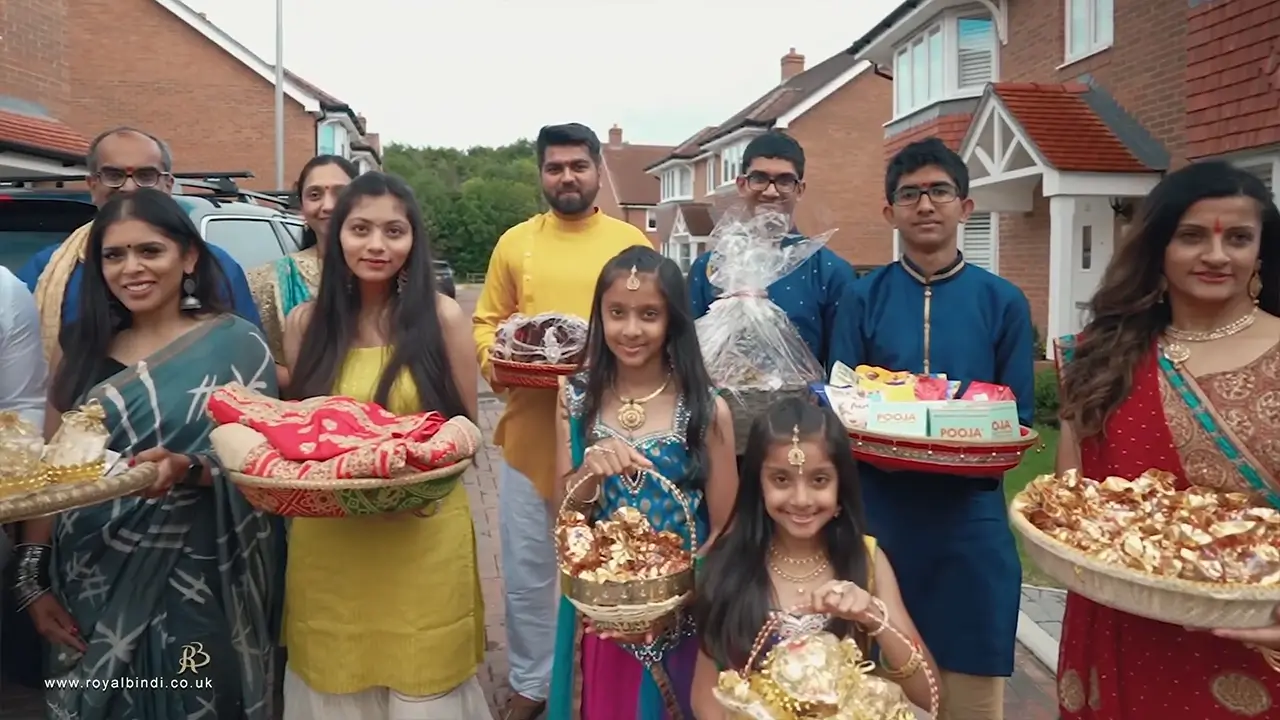
Bou Bhat
Bengali weddings culminate in a grand feast called Bou Bhat, hosted by the groom’s family. It’s a chance for the bride’s loved ones to celebrate with the newlyweds and officially welcome the bride into their family. With laughter, delicious food, and blessings flowing freely, Bou Bhat marks the perfect ending to a joyous celebration of love and new beginnings!
Did you know?
Bou Bhat, (the final feast) used to be a lunch because of limited electricity. Now, couples often have evening receptions too!
Bengali Wedding Traditions: Conclusion
Colours and joy can be found in every Bengali wedding tradition and ritual, and they are filled with happiness and celebrate love and new beginnings. From pre-wedding turmeric blessings to playful garland exchanges, every detail brims with meaning.
The ceremony reaches its peak with sacred vows and the sindoor marking the union. Bengali weddings aren’t all serious, though, with playful moments like the groom’s hilarious send-off and the bride’s welcome with milk and red liquid. The celebrations culminate in a grand feast, a joyous way to welcome the bride into her new family.
Expert Bengali Wedding Photography Services to Capture Your Special Day!
FAQ’s
What is the cost of wedding photography and videography by Royal Bindi?
Your wedding photography and videography cost may vary on the basis of your unique requirements and package. Royal Bindi's team can offer you a comprehensive quote for your unique needs. To get more details about our wedding photography packages, please contact us.
What should I wear as a guest to a Bengali wedding?
As a guest at a Bengali wedding, you should wear traditional Indian or Bengali attire. Women can opt for sarees or salwar kameez in vibrant colours, while men can choose kurtas or sherwanis. Bright colours like red, gold, and green are often preferred to match the festive vibe. Avoid wearing all-white outfits as white is traditionally reserved for mourning in Bengali culture.
How long does a typical Bengali wedding last?
A typical Bengali wedding spans several days, including pre-wedding, wedding, and post-wedding rituals. The main wedding ceremony often takes place over one day, but the entire celebration can last 3-5 days, depending on the families' preferences and traditions.
What are the key differences between Bengali and other Indian weddings?
Bengali weddings are known for their unique traditions such as Shankha Pola (bangles), Saat Paak (seven rounds of the bride around the groom), and Subho Drishti (the first glance). Additionally, the ceremonies often feature symbolic rituals like Gae Holud (turmeric ceremony) and involve simple yet meaningful décor and customs compared to the more lavish displays seen in some other Indian weddings.
What food is typically served at a Bengali wedding?
Bengali weddings feature an elaborate menu that highlights local delicacies. Popular dishes include fish curries like Shorshe Ilish, meat dishes such as Kosha Mangsho (spicy mutton curry), vegetarian options like Shukto, and a variety of desserts including Mishti Doi and Rosogolla. The meals are often served on banana leaves for a traditional touch.
What is the significance of the turmeric ceremony in Bengali weddings?
The turmeric ceremony, or Gae Holud, is a pre-wedding ritual where turmeric paste is applied to the bride and groom. It symbolises purification, blessings, and a glowing start to their married life. The yellow hue of turmeric is also considered auspicious and adds a festive touch to the wedding celebrations.
Enquire Here
Quick Links
Useful Links

